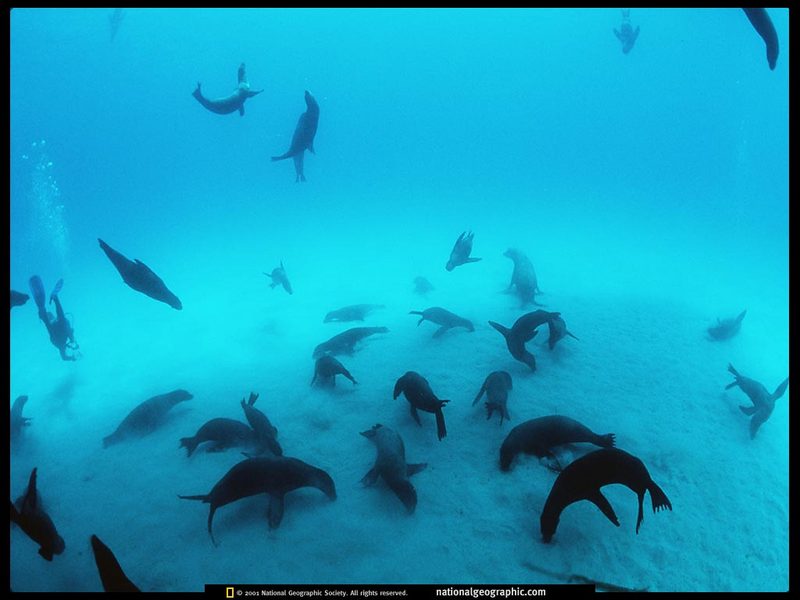|
| Query: Zalophus | Result: 26th of 73 | |
[National Geographic] Galapagos Sea Lion juveniles (갈라파고스바다사자)
| Subject: | [National Geographic] Galapagos Sea Lion juveniles (갈라파고스바다사자)
| |

| Resolution: 1024x768
File Size: 69717 Bytes
Upload Date: 2005:02:25 01:05:07
|
[National Geographic] Galapagos Sea Lion juveniles (갈라파고스바다사자)
Gal??pagos Islands, Ecuador
1999
David Doubilet
“Near the Plazas Islands juvenile Galapagos sea lions scare up inch-long [2.5-centimeter-long] shrimps by furrowing the sandy bottom with their lower jaws. Before El Ni??o ends, many sea lions will starve, unable to follow their principal prey, lantern fish and squid, as they move down into colder waters. But now in 1999 the warm, clear nightmare is over, and the sea has turned again from fallow to full.”
???From “Gal??pagos Underwater,” April 1999, National Geographic magazine
http://www.nationalgeographic.com
|
Comments |
|---|
| | Guest |
|
Galapagos sea lion (Zalophus wollebaeki)
Previously known as: Zalophus californianus wollebaeki
The Galapagos sea lion is found in the Gal??pagos Archipelago where it is one of the most conspicuous and numerous marine mammals. Well adapted to its semi-aquatic lifestyle, it has a streamlined body and powerful fins, and as a member of the eared seals (Otariidae family), which includes fur seals and sea lions; this aquatic mammal is able to control its hind flippers independently. This adaptation allows it more agility on land than seals, which cannot move their hind limbs independently. Furthermore, unlike the true seals (family Phocidae), the Galapagos sea lion swims using its strong and well developed fore flippers. Adult males are much larger than females and are brown in colour while females are a lighter tan. Adult males are also distinguished by their raised foreheads, and the hair on the crest may be a lighter colour. Juvenile Gal??pagos sea lions are chestnut brown in colour and measure around 75 cm at birth. |
^o^
Animal Pictures Archive for smart phones
^o^
|
|
|